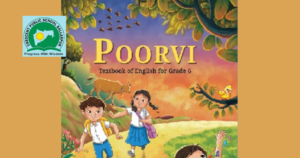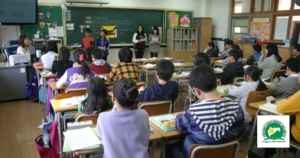By Mrs. Humaira Khan
Owner, Creative Minds Preschool, Balarpur
As the doors of Creative Minds Preschool reopen after a long vacation, we welcome the innocent giggles and tiny footsteps that bring our classrooms to life. But with this joyful return, many of our little learners—especially those joining us for the very first time—face a hidden struggle that often tugs at the hearts of parents and teachers alike: separation anxiety.
What is Separation Anxiety?
Separation anxiety is a natural and common emotional response in young children when they are separated from their parents or caregivers. It is especially noticeable in children between 18 months and 4 years of age, but it can surface any time a child experiences a new environment—such as starting school after a long holiday.
Children express separation anxiety in different ways: crying, clinging to parents, refusal to enter the school gates, stomachaches, or even silence. These are not signs of weakness—they are signs of strong bonding and attachment.
As famous developmental psychologist John Bowlby once said,
“The initial attachment between parent and child forms the blueprint for future relationships, and separation, though painful, is the first step toward independence.”
Why Does it Happen?
Young children thrive on familiarity. During vacations, they become closely attached to home routines, family members, and the comfort of their known world. Returning to school—no matter how fun or friendly the environment—can feel like a big leap into the unknown.
According to a 2023 study by the Indian Academy of Pediatrics:
(a) Over 65% of nursery-aged children show some signs of separation anxiety in the first two weeks of school.
(b) The effects are temporary in over 90% of cases, with children adapting quickly when supported by gentle routines and empathy.
What Parents Can Do
Dear parents, your role during this transition is incredibly powerful. Here are a few ways you can support your child through this emotional phase:
1. Start Talking About School Early
Use bedtime stories or role-play to create excitement about school. Highlight the fun activities, new friends, and loving teachers they will meet.
2. Create a Predictable Routine
Children feel secure with routines. A calm and consistent morning ritual—even something as simple as packing the bag together or choosing a hairclip—builds confidence.
3. Offer a Comfort Object
Let your child carry a small soft toy, a family photo, or even a handkerchief with your scent. These familiar items act as emotional bridges between home and school.
4. Keep Goodbyes Short and Sweet
Lingering at the school gate often increases anxiety. A warm hug, a kiss, and a reassuring “I’ll be back soon!” helps them feel safe and cared for.
5. Trust the Teachers
Our trained team at Creative Minds Preschool handles separation with compassion. Many teachers are parents themselves. We observe, comfort, and engage the child positively while keeping you informed.
A Message from My Heart to Yours
At Creative Minds Preschool, we understand that the first separation is often harder for the parent than for the child. But rest assured, these first goodbyes lay the foundation for self-confidence, adaptability, and emotional resilience.
In just a few weeks, the same child who cried at the gate will run toward school with joy and a smile. That moment, dear parents, is not just a sign of growth—it is a reward for your patience, love, and support.
Let’s walk this journey together, hand in hand, for our children’s brighter tomorrow.





